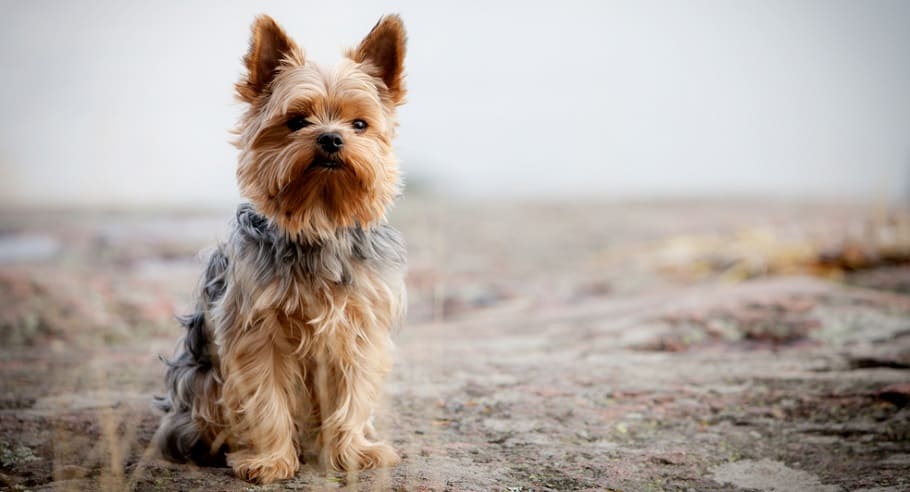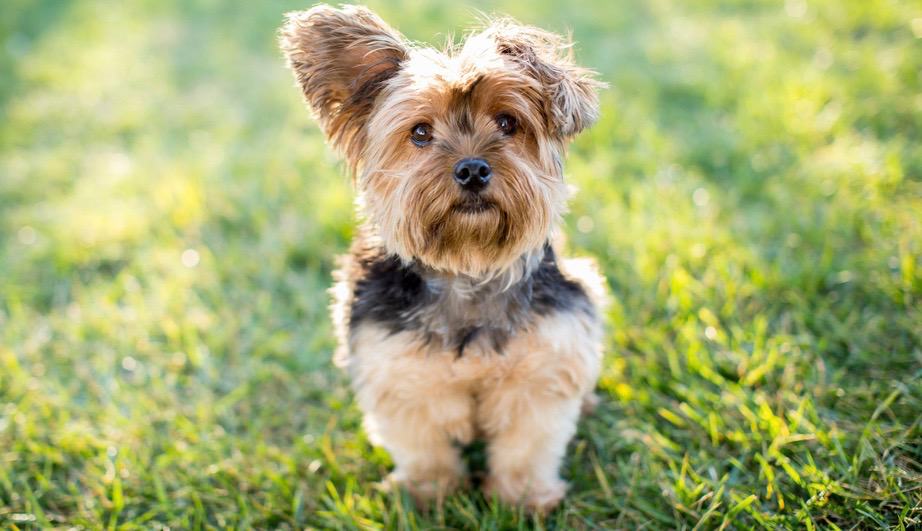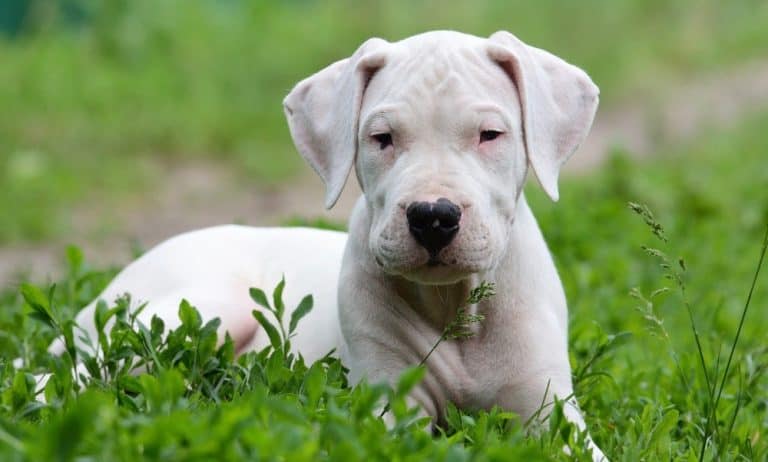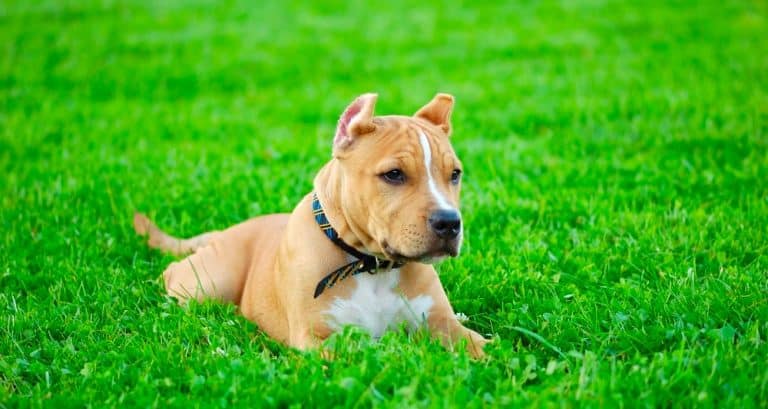Yorkie Growth Chart (Weight & Size Chart) – When Do Yorkies Stop Growing?
If you’re looking for a teacup pup breed, the Yorkie is one of the smallest breeds of dogs you can get, averaging between three and seven pounds when fully grown.
Especially if you’re living in a smaller apartment that has a weight limit on pets, the Yorkie can be a great, low-maintenance pet choice for a perfect, furry companion.
In this article, we’re going to go through the Yorkie growth chart that shows their progress from pup to adult.
Especially if you’re interested to know when do Yorkies stop growing, this article can answer some very important questions!
When Do Yorkies Stop Growing?

From the early stages of a Yorkie’s life, the pups tend to grow quite rapidly right off the bat. Although they shoot up substantially (at least for their end height) in the beginning, the growth will slow down as time progresses and the years go by.
Throughout the stages of development of your Yorkie puppy, you’ll be able to follow it on a growth chart, as they go from being a suckling to a puppy, from youngster to young adults and then a fully-grown adult, they will go through a bit of a size change.
Typically, a Yorkie will stop growing at around four years old. Once your dog has reached this age, you can expect that he will not grow any taller.
However, please keep in mind that Yorkie, although he will stay smaller in stature, he might grow in weight, which can affect the overall Yorkie size.
If you do stick to a healthy diet and exercise plan for your pup, this shouldn’t be an issue as they grow in age.
Yorkie Weight Chart
In order for you to keep track of your Yorkie’s growth process, we’ve attached a Yorkie size chart below to help you calculate your Yorkie’s development and if they are in line with where they’re supposed to be at a healthy developmental process!
| Birth | 2.5 oz | 2.75 oz | 3 oz | 3.5 oz | 4 oz | 4.25 oz | 4.5 oz | 5 oz | 5.5 oz |
|---|---|---|---|---|---|---|---|---|---|
| 1 week | 4.5 | 5 | 5.5 | 6 | 7 | 7.5 | 8 | 9 | 9.5 |
| 2 weeks | 6 | 6.5 | 7 | 8.5 | 10 | 11 | 12 | 13 | 13.5 |
| 3 weeks | 7 | 8 | 8.5 | 10.5 | 13 | 14 | 15 | 16 | 17.5 |
| 4 weeks | 8 | 9.5 | 10 | 12 | 14.5 | 16 | 18 | 20 | 21 |
| 5 weeks | 9 | 11 | 11.5 | 13.5 | 16 | 18 | 20 | 22 | 24 |
| 6 weeks | 10 | 12.5 | 13 | 15 | 17.5 | 20 | 23 | 24 | 27 |
| 7 weeks | 11 | 12 | 14.5 | 17 | 19 | 22 | 25 | 27 | 30 |
| 8 weeks | 12 | 13.5 | 16 | 19 | 21.5 | 24 | 27 | 29 | 32 |
| 9 weeks | 13 | 15 | 18 | 22 | 23 | 26 | 30 | 33 | 35 |
| 10 weeks | 14 | 16 | 20 | 24 | 25 | 28 | 33 | 36 | 38 |
| 11 weeks | 15 | 17 | 21 | 26 | 28 | 31 | 36 | 39 | 42 |
| 12 weeks | 16 | 18 | 22 | 28 | 32 | 35 | 40 | 43 | 45 |
| 13 weeks | 17 | 20 | 24 | 30 | 34 | 36 | 42 | 45 | 48 |
| 14 weeks | 18 | 22 | 26 | 32 | 36 | 39 | 44 | 47 | 51 |
| 15 weeks | 19 | 23 | 28 | 34 | 38 | 42 | 46 | 51 | 55 |
| 16 weeks | 20 | 25 | 30 | 36 | 40 | 44 | 49 | 54 | 59 |
| 17 weeks | 21 | 26 | 31 | 38 | 42 | 46 | 51 | 57 | 62 |
| 18 weeks | 22 | 28 | 33 | 39 | 44 | 48 | 54 | 60 | 65 |
| 19 weeks | 23 | 29 | 34 | 40 | 45 | 50 | 56 | 62 | 67 |
| 20 weeks | 24 | 30 | 35 | 41 | 46 | 52 | 58 | 64 | 70 |
| 21 weeks | 25 | 31 | 36 | 42 | 48 | 54 | 60 | 66 | 72 |
| 22 weeks | 25 | 32 | 37 | 43 | 48 | 56 | 62 | 68 | 74 |
| 23 weeks | 26 | 33 | 38 | 44 | 50 | 57 | 64 | 70 | 76 |
| 24 weeks | 26 | 33 | 39 | 45 | 51 | 58 | 65 | 71 | 78 |
| 25 weeks | 27 | 34 | 40 | 46 | 52 | 59 | 66 | 72 | 79 |
| 26 weeks | 27 | 34 | 40 | 47 | 53 | 60 | 67 | 73 | 80 |
| Final Adult Weight | 2 lb | 2.5 lb | 3 lb | 3.5 lb | 4 lb | 4.5 lb | 5 lb | 5.5 lb | 6 lb |
In the Yorkie weight chart, you’ll notice that it is categorized by age in weeks, starting from birth and continuing forward up to 18 months!
If this is your first time owning a Yorkie, this chart can be extremely useful in measuring whether or not your pup is hitting the average growing sizes and development measurements for their age group.
It’s very important to note that depending on how heavy your Yorkie was at birth, this can definitely determine the developmental process of your pup.
For example, if your Yorkie was born at a very small size, around 2.5 oz. at birth, then their average sizes will be expected to be much smaller when it gets to the 18-month stage.
Throughout the chart, you can calculate what you’re going to be expecting during each age and size category.
We would definitely recommend consulting with your veterinarian about any particular questions you may have about your specific puppy’s size.
Yorkie Growth Chart – What To Expect

As your Yorkie grows, you should make sure to consult your chart to see whether or not your pup has been meeting the standard sizes. To help you throughout the developmental stages, here are the different developmental stages you should be expecting:
Birth – 2 Weeks
During the first two weeks of life, the Yorkie’s size can generally be compared to that of an avocado! Generally, around three to five ounces in weight, the first two weeks of life for a Yorkie can be pretty needy.
Since their eyes tend to remain closed for the majority of this time, the Yorkie will typically sleep through their first two weeks—what a life!
It actually also takes a while for the Yorkie to learn how to crawl. During the first two weeks, they generally resort to doing a stomach scoot of some sort as they look around for their mother’s milk for feeding.
Especially since the Yorkie is quite small in stature, the runt of the litter can be hard to make out but will be apparent as the litter grows.
2 Weeks – 8 Weeks
As the Yorkie matures, it can reach the size of a papaya! During this infancy stage, a Yorkie will head into its infancy stage—which will trigger a need for exploration!
As they find their paws, they’ll start to crawl and climb out of their beds on their own in order to explore their environment.
During this period, you’ll be able to soon introduce solid foods as your pup will start to wean off their mother’s milk. During this time, the weight of a pup should be around 12 to 32 oz!
Your Yorkie pup should also start to potty train, with puppy pee pads being a great investment to buy if you’re looking to keep your house clean!
8 Weeks – 6 Months
During this important developmental milestone, the Yorkie can reach from the size of a grapefruit and get up to the size of a pineapple—that’s a lot of growth!
Although you may want to squeal “Puppy!” ever since they’ve been born, this is the actual puppy stage in a Yorkie’s development.
During this period, your pup will start to find its voice—its bark and yelp, letting you know when they want something and learning how to communicate with you.
Don’t be alarmed when your pup starts to get a bit more rambunctious during this time! She or he will start to engage in a few wrestling matches—but still will enjoy their naps! The size of your pup will reach from 26-78 oz.
6 Months – 2 Years

As it slowly reaches adulthood, which is around the size of a butternut squash, the Yorkie will reach a few milestones during this developmental period. During these teenage years, your pup will turn into a full-grown dog—and will let you know about it!
This is where the social personality of a Yorkie will start to shine! Although she or he might start to get more and more independent during this stage, it’s still important for you to get your dog to socialize and engage with other dogs for playtime.
If there is a lack of socialization, this may lead to separation anxiety—which is definitely something you want to avoid!
A Yorkie’s growth normally slows dramatically around nine months old and can reach his or her fully-grown size around one year.
Adult
As an adult, a Yorkie should be completely done growing! After two years, the weight of your dog should not fluctuate much—as this could be an indication of a lack of exercise or an improper diet.
The dog should also have settled into a routine by now and should have a fully developed personality. You should be able to tell what your dog doesn’t like, does enjoy, and his or her eating habits.
As a fully-grown adult, the Yorkie can be measured anywhere from an average of 2 lbs to 6 lbs in size.
How To Properly Weigh And Measure A Yorkie?

Whether you are curious about your Yorkie’s weight or trying to get your puppy to gain or lose weight, you can weigh your puppy at home using your bathroom scale.
Knowing your Yorkie’s weight will help you know whether their weight is ideal for their age or not.
First, step on the scale and weigh yourself. Then, carry your Yorkie and step on the scale. Subtract your weight from the combined weight of you and your Yorkie.
For example, if your weight is 150 pounds and the weight of you holding your Yorkie is 155 pounds, subtract 150 from 155 and your Yorkie’s weight will be 5 pounds.
What Is Yorkie’s Average Neck Size?
The main reason for determining your Yorkie’s neck size is to find a comfortable and secure collar for them. Use a flexible measuring tape to determine your puppy’s neck size.
Circle the measuring tape around the thickest part of your Yorkie’s neck (around an inch above the chest).
Slide two fingers between the tape and the neck to ensure that the collar will not be tight around the neck. The measurement is your Yorkie’s neck size.
On average, Yorkie’s neck size range between 6 and 12 inches.
Regular Yorkie vs Teacup Yorkie
Regular Yorkies and Teacup Yorkies share many distinct characteristics, but they also have a few differences.
Firstly, teacup Yorkies are considerably smaller and weigh less than regular Yorkies. A teacup Yorkie weighs about 2 to 3 pounds, while a regular Yorkshire Terrier weighs approximately 6-7 pounds.
Additionally, because of their tiny size, the Teacup Yorkies are more likely to suffer from health problems or birth defects. Nevertheless, this does not mean that they still can’t have a happy life.
Even though both Teacup Yorkies and Regular Yorkies are small, the Regular Yorkies are around twice the size of regular Yorkies.
When it comes to taking care of them, you have to be very careful because of their size. Simple mistakes can really affect their health because they are so fragile.
Generally, Yorkies have large personalities. There are some major variations in their personalities. Teacup Yorkies are normally more spirited and playful than regular Yorkies, but they are also more difficult to train.
Fun Facts About Yorkies
- Yorkies Got Their Name During the Development of Yorkshire, England.
- Yorkies Are excellent Watchdogs but they are so small so they cant scare away intruders
- Yorkies Were initially Bred as Working Dogs due to Their Small Size. They were originally bred to catch rats in clothing mills.
- One of the Most Famous World War II Dogs Was a Yorkie Smoky.
- Records for the Smallest Dog was held by Yorkies Many Times.
- Yorkie puppies are born black and tan, then change color.
- Yorkies are a Popular Celebrity Dog Choice because of Audrey Hepburn.
Yorkie Size Chart
Many dog parents to Yorkies want to know if their Yorkie is the correct height and weight. This is important so that you can monitor his growth and ensure that he is meeting all developmental milestones.
The AKC states that Yorkshire Terriers should measure around 7 and 8 inches (17.8 – 20.3 cm) and should weigh 7 pounds (3.18 kg) or less. Nevertheless, not all Yorkies would weigh the same.
Adult Yorkshire Terriers are usually 7 to 8 inches (17.8 – 20.3 cm) tall when you measure the distance between the ground and the ridge between their shoulder blades.
The Best Age to Spay or Neuter a Yorkshire Terrier
For maximum benefit, it is best that, a Yorkshire Terrier is spayed or neutered before the age of 1 year old.
When it comes to females, studies show that the best chance of lower cancer rates is when spaying is done before the first heat cycle. This is usually at the age of 4 to 5 months old since Yorkies usually go into heat a while after that.
The likelihood of developing mammary cancer is greater even if a dog has just one heat and increases as each future heat cycle is allowed to happen.
On the other hand, for males neutering is usually done before a dog reaches puberty, at the age of 4 to 6 months old, before the puppy has had the chance to develop bad habits like territorial marking.
Factors That Affect Yorkie Puppy Growth

As we mentioned earlier, we would definitely recommend speaking to your veterinarian about the specific development of your pup. However, here are some factors that can affect growth:
Diet
Although our Yorkie growth chart can be pretty informative, a Yorkie puppy’s diet can play a huge role in how your dog’s body is affected.
As your dog grows, there are specific foods formulated for particular stages of your dog’s development. Principally speaking, your dog’s diet should be relatively high in protein to help them build strong muscles.
You should also make sure they have a healthy diet of calcium, vitamins, and minerals, as well. A good indicator of your dog’s diet is their fur—does their coat have a healthy sheen to it?
Genetics
Just like with your own family medical history, your dog’s hereditary history plays an important role in how they will turn out as adults as well.
This can be a beneficial source of information if you’ve gotten your Yorkie from a breeder, who typically keeps that sort of information on hand about your pup’s parents!
This will give you the ability to compare measurements and see any medical history that you should be concerned about.
Exercise
The Yorkie weight chart listed above can be specifically affected by exercise habits as well. If your dog has an active lifestyle, he or she is most likely to stay in an average weight category for its age!
Although a Yorkie will stay active on its own, filled with energy, you can also do your part as its dog-mom or dad to help them get their exercise in during the day.
It’s recommended that you take your Yorkie on one or two 30-minute walks, every day! This can also help you stay healthy, too.
How Long Are Yorkies Pregnant?

If you’re in luck and your Yorkie is going to have pups, then you’ll need to know a few things before your grandparenthood begins!
First off, it’s important to know that the average gestation period for a Yorkie will typically be between 58 to 68 days. If your Yorkie mom-to-be still hasn’t delivered on day 67, then you should definitely get in touch with your veterinarian!
Whether you’re aware of your dog’s medical history or not, a canine pregnancy calendar can be helpful when preparing for a dog to deliver.
How Many Puppies Do Yorkies Have?
If your Yorkie has been presenting pregnancy signs and symptoms like enlarged nipples, a firmer or enlarged stomach, an increase in appetite, and weight gain, then congratulations—you’re going to be a dog grandparent!
The labor symptoms of a Yorkie will start within 24 hours of delivery, where her body temperature will start to drop.
For a Yorkie—full name Yorkshire Terrier—you should expect an average litter size to be from 1-5 puppies!
What Is The Life Expectancy Of Yorkies?
If you’re an owner of a Yorkie, you’re going to be in it for the long haul! Just like with smaller dogs, you can expect their life expectancy to be a long one!
Of course, just like with all dogs and other living creatures, there are plenty of variables that play a role in how old a Yorkie will get. However, you can expect your pup to reach anywhere from a typical 13-16 years of age!
How Much Does It Cost To Own A Yorkie?

Depending on how you first obtain your Yorkie—whether adopting or buying from a breeder (which can run from $1,200-$1,500—this can definitely affect the price.
Yorkie Common Health Problems
Some common health problems with a Yorkie include a variety of different ailments, which can be bronchitis, lymphangiectasia (a dilation of lymph vessels), portosystemic shunt (a congenital problem with a dog’s vein), cataracts, and keratitis sicca (which is dry eye disease).
You should also be aware that a Yorkie can develop a delicate digestive system, which means that they should be maintaining a very regular diet!









